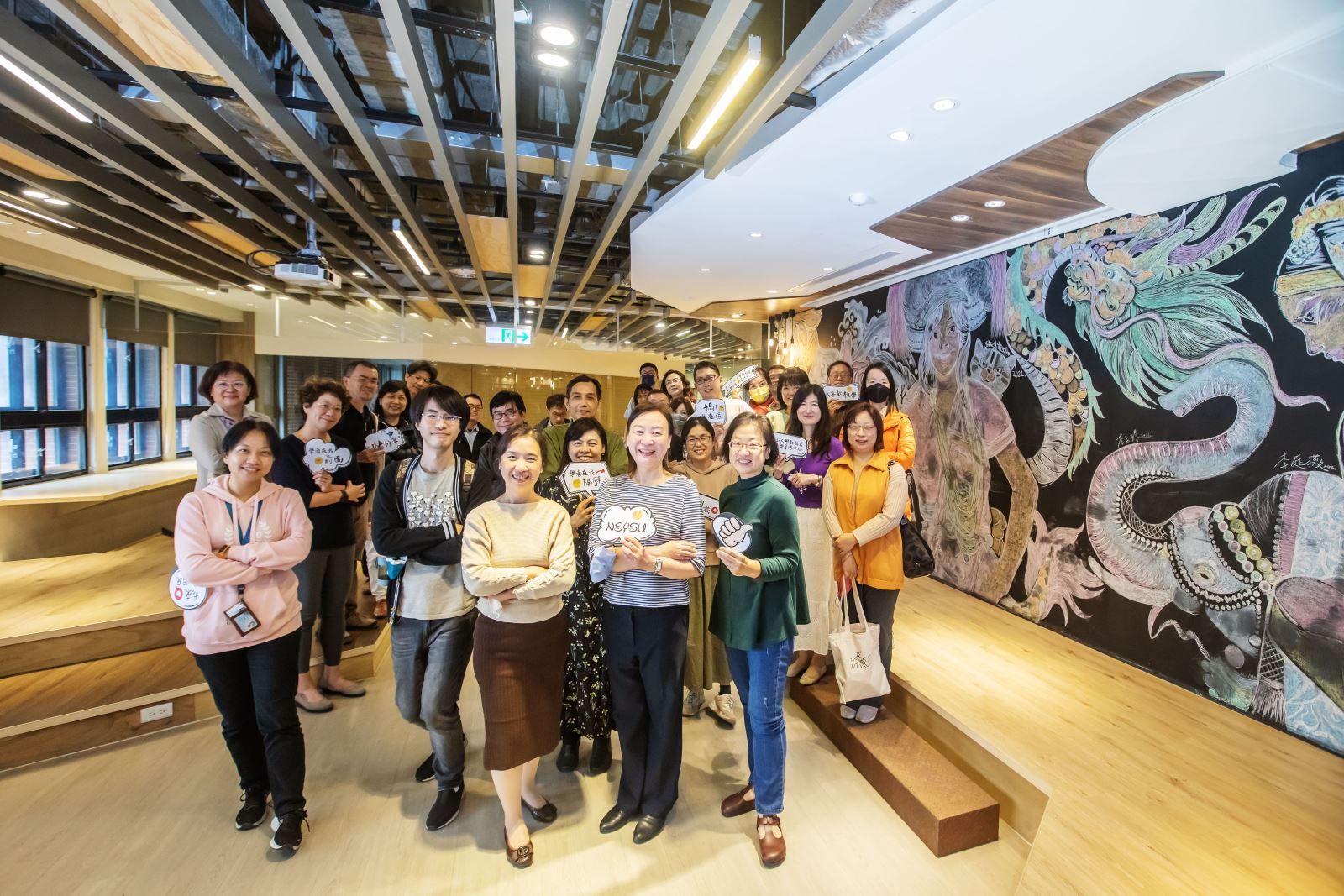EMI教師培訓計畫 精進英語授課教學力
國立中山大學南區雙語區域資源中心與教務處教發中心推動EMI教師培訓計畫,延續「基礎課程」,舉辦3場「進階」工作坊協助區域大學教師提升EMI專業知能,課程圍繞協助學生於EMI課程中達成有效學習的策略。分別邀請國家教育研究院語文教育及編譯研究中心謝承諭助理研究員講解「EMI中的課程互動能力:增進學生參與的語言與非語言策略」、中山大學外文系徐淑瑛教授主講「EMI課程的討論引導及反饋」、及中正大學外文系暨英語教學所陳玟君副教授講授「EMI課堂用語與教材視覺化」。
The Southern Regional Resource Center for Bilingual Education and Teaching and Learning Development and Resources Center of NSYSU held junior-level workshops of EMI Professional Development Program. Three instructors equipped with experiences and insights into EMI were invited to help teachers acquire a greater variety of teaching strategies and enhance the quality of their EMI courses. Dr. Chen-Yu Hsieh, assistant researcher at the National Academy for Educational Research talked about “Classroom Interactional Competence in EMI, Verbal and Non-verbal Strategies for Enhancing Student Engagement”; Dr. Shu-Ing Shyu, professor of the Department of Foreign Languages and Literature, NSYSU, shared “Discussion Strategies and Giving Feedback in EMI Courses”; Dr. Wen-Chun Chen, associate professor of the Department of Foreign Languages and Literature, NCCU, presented “EMI Classroom Talk and Material Visualization”.
謝承諭研究員分享EMI課堂中增進學生參與的不同策略,介紹許多教學模式供教師在不同情境下使用。在雙語教學課堂中,除了重視英語的使用比例,也期望學生能與教師以及同儕多加行互動。謝承諭引用國外教育學研究,指出課堂互動應是課堂的基本構成,使學生有效率吸收課堂知識之餘,也能協助學生克服在EMI情境中對語言的不適應。Classroom Interactional Competence (CIC, 教室互動能力) 是其中一個協助教師設計課堂互動的方式,透過檢討與學生的對話並修正自己的提問方式,教師能讓回應變得踴躍而更有内容。提出更爲廣泛及沒有正確答案的問題,又以專業的說法重複學生提出的論點,教師能讓學生更有發言的信心,同時從發言中加深課堂觀念的理解。
To inform teachers of the importance of designing activities for interactions in EMI classrooms, Dr. Hsieh cited foreign pedagogy studies to endorse his advocacy of implementing different modalities by means of which students could be better engaged in EMI classes, in addition to the language dimension. He introduced various models, one of which was Classroom Interactional Competence, a strategy for helping teachers insert and modify classroom interactions. By reviewing and refining the pace, wording, and timing of asking questions, teachers could receive an improvement in both the quality and quantity of students’ responses. For instance, teachers should make use of diverse questions in different scenarios, such as raising open-ended questions to elicit deeper thoughts, and short answers questions to encourage participation. By summarizing and paraphrasing students’ thoughts in a professional manner, teachers could also better reinforce comprehension as well as nurture students’ confidence in speaking up.

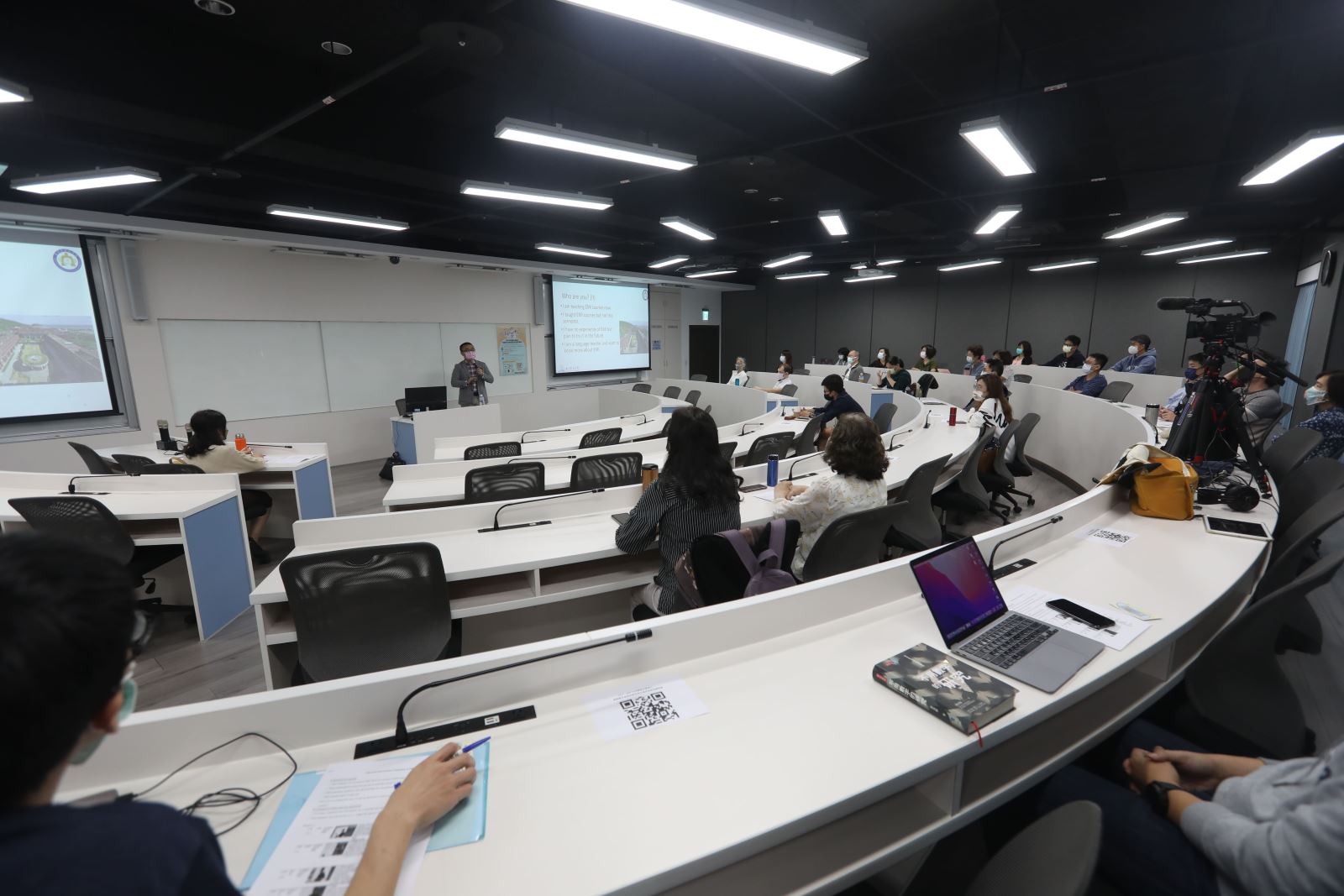
延續語言的面相,謝承諭進而介紹非語言的教學策略,即利用肢體動作及視聽教具等方式共構出促進學習的環境以及刺激。與先前提到的CIC相呼應,謝承諭提出「沉默」作爲一種教學模式應用的例子。正如突然不說話的教師有時能讓嘈雜的課堂安靜下來,教師在提問以後若延長等待學生回應的時間也會對課堂有幫助。提問後的一段靜默除了能給予學生整理思緒的時間以外,也能產生令學生感到不適的尷尬氛圍,刺激他們給出終結沉默的回答。
In addition to spoken language, Dr. Hsieh continued by introducing the usage of non-verbal strategies. Body language or visual aids could be effective in stimulating comprehension, as well as constructing an encouraging and dynamic classroom environment. As CIC was about teacher’s pace of speaking, Dr. Hsieh also shared how “Silence” can be manipulated into a model of teaching. By keeping quiet after putting out a question, teachers could make the class pay attention, provide time for students to think, and also create an unsettling atmosphere, so that students would be forced to open their mouths and break the silence.
徐淑瑛老師的分享著重於如何設計課堂活動來促進討論並使學生專注。他首先講述如何設定適當的學習目標,並引導參與教師練習擬定。學習目標應該是可觀察且可測量的,而有了明確的學習目標,教師們就可據此規劃適合的課堂活動。
Dr. Shyu’s sharing centered around how to design class activities that could foster discussion and engage students effectively. Before expatiating on a variety of discussion strategies, Dr. Shyu guided participants to identify the attributes of an ideal learning outcome and let them practice writing theirs, which were supposed to be observable and measurable. With a clear objective, teachers would be able to devise activities that properly met that goal.
徐老師認為,參與式學習十分重要,因為在傳統講授方式的情境下,學生的專注力很容易迅速渙散,因此需要設計活動讓他們持續參與課堂。她介紹了多種策略:歸納式教學(inductive instruction):從例子到原則,從特定到一般的教學順序;如何使用Quizlet、問卷調查、Padlet、Zuvio來促進文字與口語討論;運用信息落差(information gap)活動來進行溝通式學習;採用拼圖式(jigsaw)合作學習之模式來進行分組活動。
Dr. Shyu emphasized the importance of participatory learning because students’ retention rate tended to be very low if an instructor simply kept on lecturing. It was necessary to keep them constantly busy through activities. She introduced strategies that were more effectively engaging: inductive instruction, which guided students from example to theorem, from the specific to the general; strategies for directing written and oral discussion with Quizlet, survey questions, Padlet, and Zuvio; rendering information gap explicit to facilitate communication; cooperative learning: grouping students with the model of jigsaw discussion and other variations.
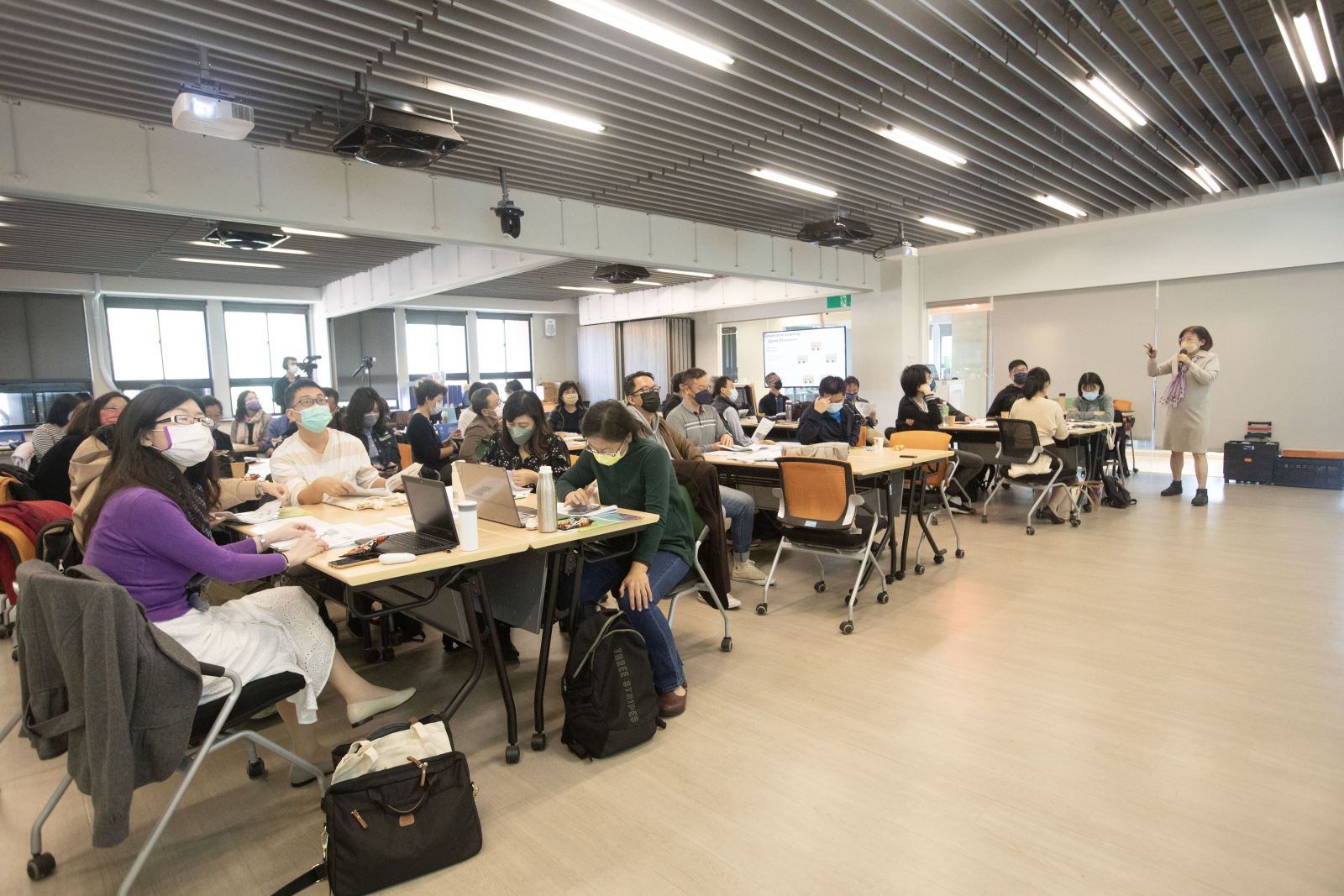
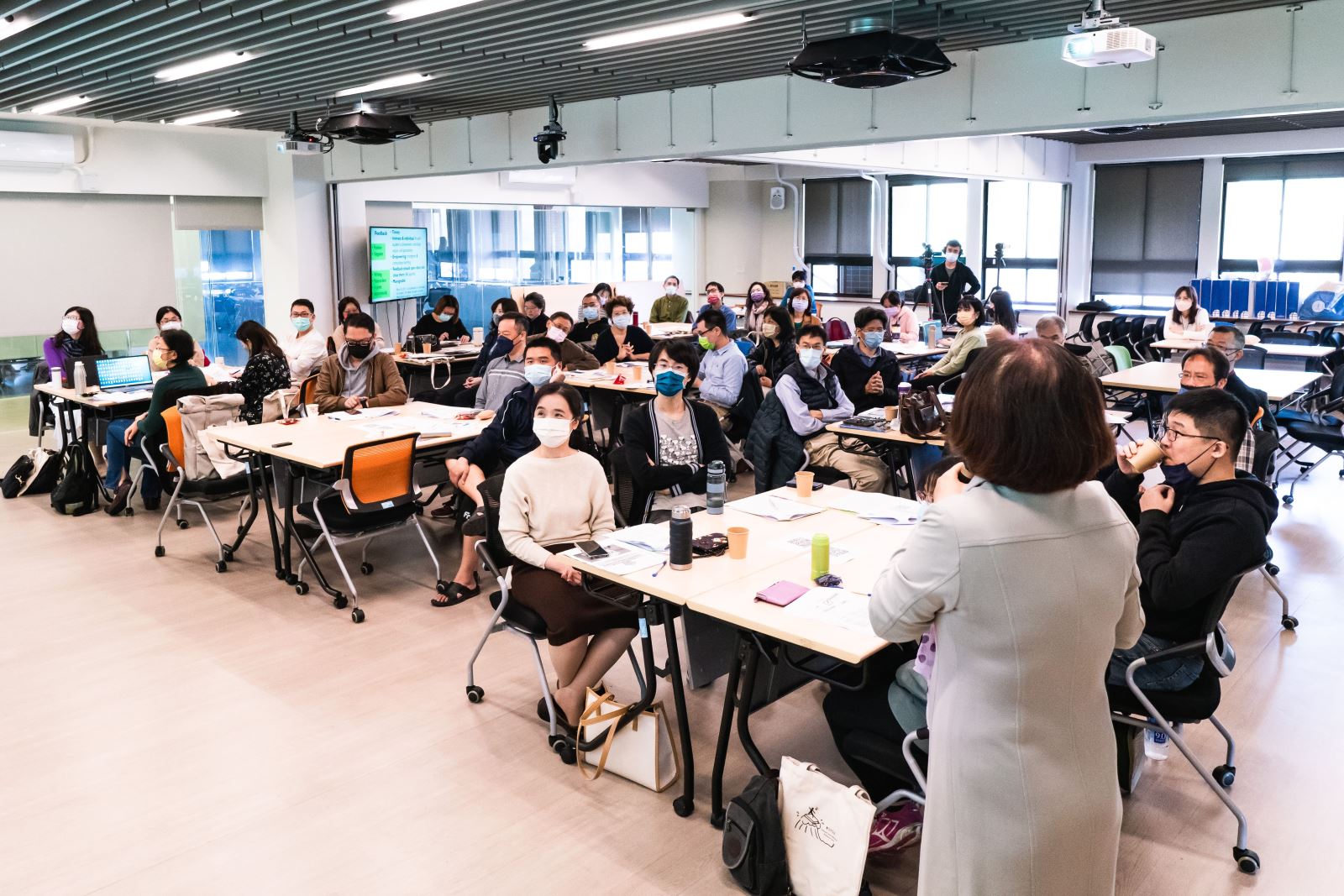
此外,要鞏固學習,對於學生的努力參與和貢獻給予適當回饋也是必要的一環。徐老師詳述給予回饋的原則,回饋內容應當要具體、令人鼓舞、且明確,針對書面和口頭回饋,他分享了十分實用的慣用語句,同時提醒給予改善建議時應如何修飾表達語氣。總的來說,回饋應當包含具體建議及說明、以及實際的例子。經過徐老師講解「教學目標、討論、回饋」之模型,與會教師口袋裡已裝滿各式討論引導策略,可望藉由活動使學生於EMI課堂中達到高層次思維!
Last, giving feedback was also necessary after students’ hard work and contribution to consolidate learning. Dr. Shyu expounded on the principles for giving feedback, which should be constructive, encouraging, and specific. She provided hands-on linguistic formulas for written and oral feedback and also reminders for moderating the expressions when giving suggestions for improvement. Overall, feedback should include constructive suggestion accompanied by explanation of improvement to be achieved, and with an example. With Dr. Shyu’s objective-discussion-feedback model, teachers hopefully would be able to design different activities that helped students achieve higher order thinking in EMI classes successfully!
陳玟君老師的講座則是關於EMI課堂中的有效溝通,前半部「Classroom Talk for EMI: Signposting Language for Teaching」關注EMI課程的有效授課語言,後半部「Visual Communication in EMI Teaching」則解密視覺圖像傳達的原則。由於參與EMI課堂理想的英語能力是CEFR-C1,或許達到該階級所描述的能力會是EMI授課教師的目標。陳老師指出,身為非英語母語者,EMI並非我們自然而然就沉浸於其中的環境,因此需要有意地去創造出來,而慣用語塊(formulaic language)就是得以建立如此環境的教學語言。具體而言,字詞或語言意義單位有一個預先決定或特定的語序,對於我們的認知而言更容易處理信息,在特定情況下,我們也更期望某些表達會發生,而教師則能使用這套模式達成有效的溝通。陳老師展示了實際的語料分析,配合其絕佳的口條,令人完全信服該理論的有效性。將授課單元分為包含回顧(recap)、連貫(connect)、詳述(expand)、強化(reinforce)、和總結(wrap-up)的循環,陳老師針對每個步驟都提供了完整的路標語句(signposting expressions),參與教師即刻就能有效利用!
The focus of the lecture by Dr. Chen was on effective communication in EMI. The first half “Classroom Talk for EMI: Signposting Language for Teaching” was on verbal communication and the second “Visual Communication in EMI Teaching” was on visual. Since the expected English proficiency for EMI was CEFR-C1, perhaps EMI instructors’ delivery should also meet this standard. As non-native speakers of English, we weren’t naturally immersed in EMI environment, and that’s why it was requisite to deliberately create one, pointed out Dr. Chen. The teaching language by means of which such a scenario could be generated, she introduced, was formulaic language. Specifically, there was a preordained, specific sequence of expressions that was more favorable for our cognitive faculty to perceive and process. There were some patterns of language that were recurrent and expected, which teachers could emulate to achieve effective communication. By showing actual data of corpus analysis with her own articulation as a prominent model, Dr. Chen convincingly demonstrated the potency of separating expressions properly into chunks. Dividing taught content into cycles of recap, connect, expand, reinforce, and wrap-up, she provided the complete signposting expressions for each stage. Participants were all equipped with this set of language tools ready for use!
工作坊後半部的主題是視覺傳達技巧。以一篇關於K-pop的文章作為例子,陳老師展現了如何透過幾個關鍵字就能傳達主要的訊息,以及如何利用心智圖法(mind mapping)工具有效的將關鍵字之間的連結展現出來,並延伸到更細緻的項目。在圖像呈現中,可以藉由操作包含尺寸、顏色、距離、形狀、及順序這些面向的視覺碼(visual coding)來引導讀者的注視路徑(attention route)、順序(sequence)、及凸顯重要性(importance)。我們傾向以「Z」字順序來觀看,而襯線體則能更好的引導我們閱讀,這些技巧對於教師們製作授課簡報與圖像化都將十分受用。
Another tool Dr. Chen would like to empower participants with was the know-how of visual communication. Using an article on K-pop as an example, she demonstrated how the information could be conveyed with only a few keywords, and how mind mapping tools could display the connections between keywords and expand the whole scope. To indicate attention route, sequence, and importance in visual presentation, actually there’s a visual coding pertaining to size, color, proximity, shape, and sequence. Our eye flow conformed to the “Z” sequence; fonts with tails had a stronger effect on guiding our reading. All those tips were worth considering when making slides.
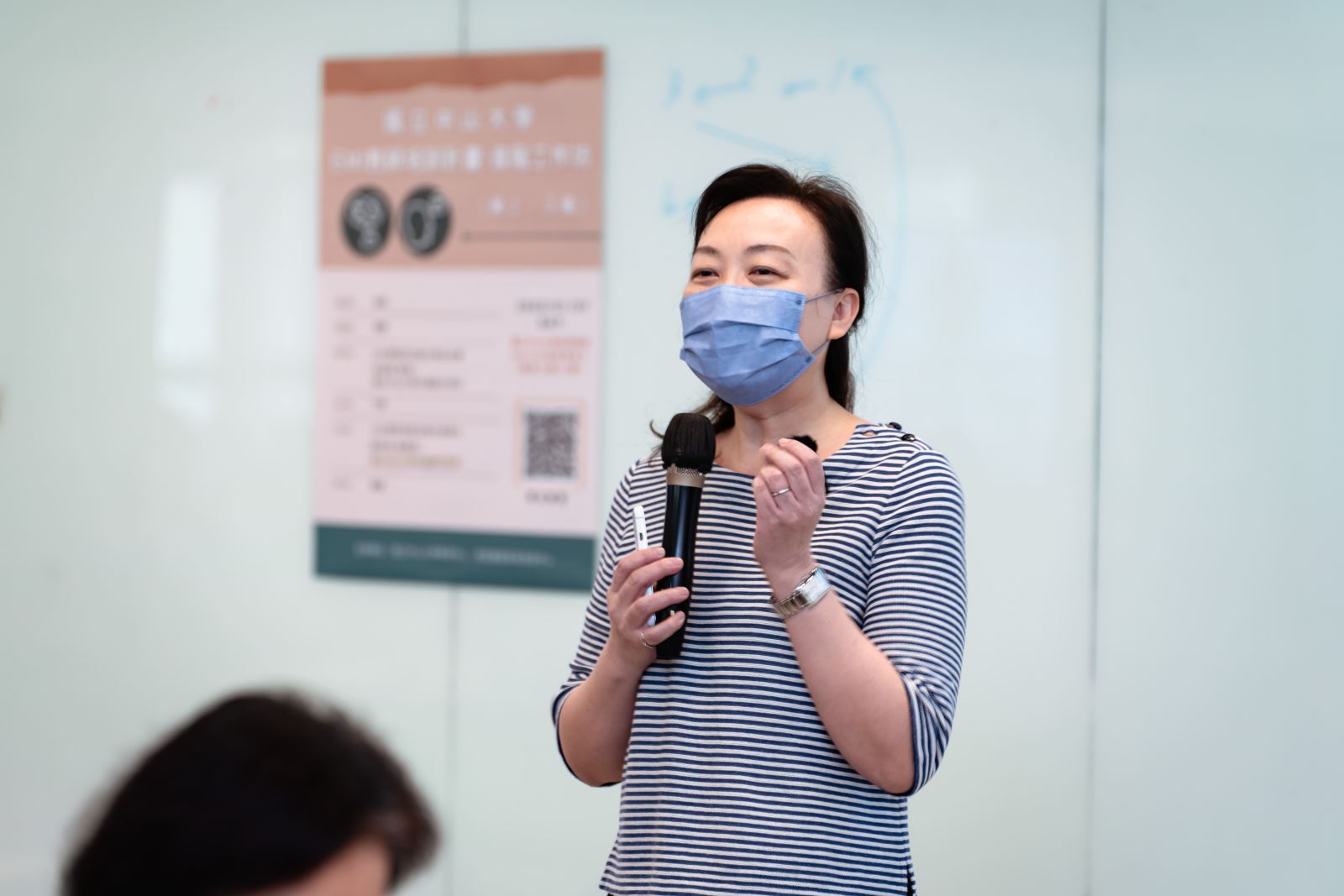
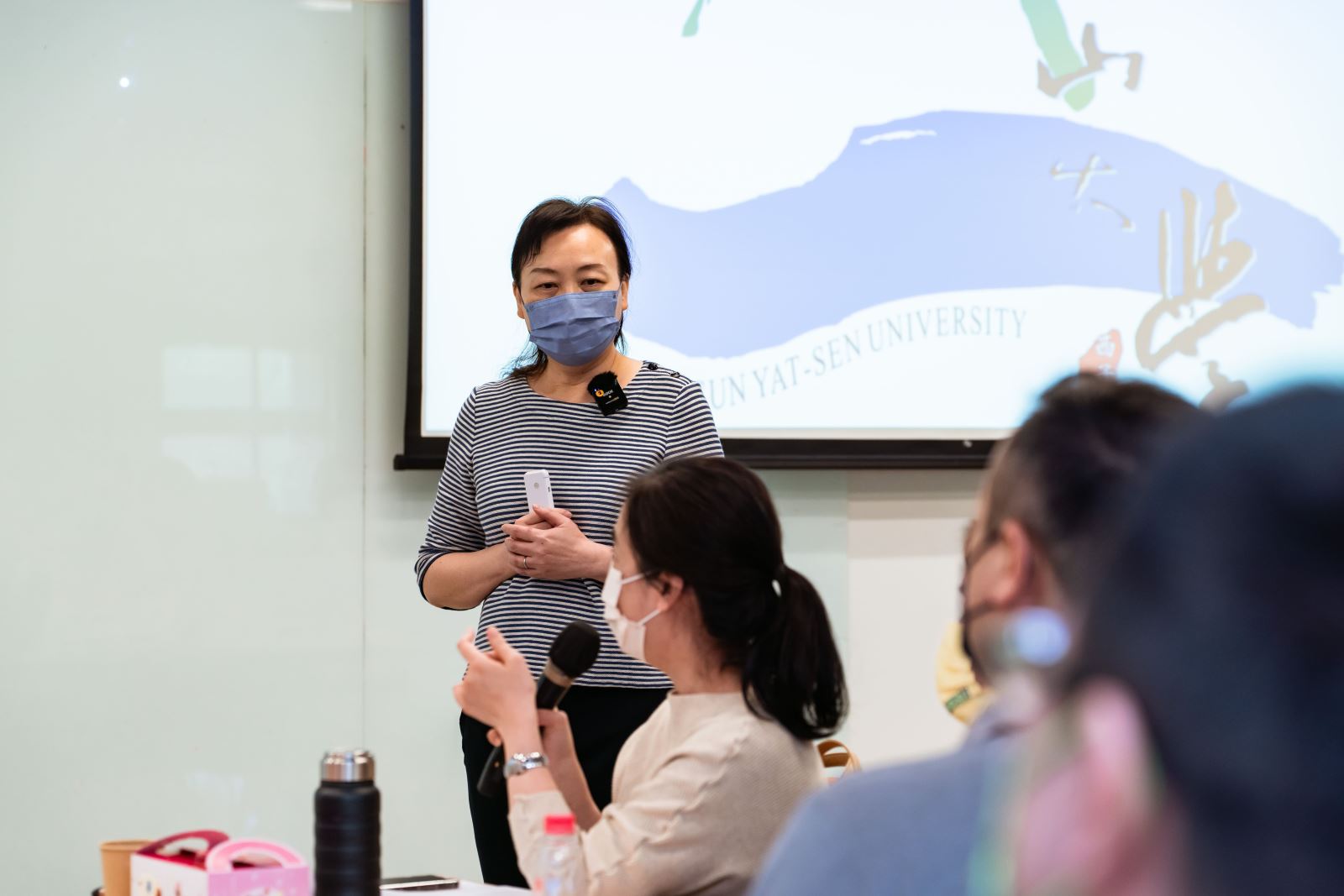
年輕的世代似乎越來越習慣以圖像來認識這個世界,而EMI同樣需要圖像溝通的輔助來理解知識。陳老師說,儘管學習將教材影像化一開始必定會耗費大量時間,但若有效學習是我們的目標,這將是必經的歷程。他鼓勵,既然我們有十年去達成雙語目標,那肯定沒問題!經過一整天紮實的課程,相信與會教師們已經獲取充足量能,準備好執行自己的教學革命,在新學期的EMI教室中展示成果!
The younger generation seemed to increasingly rely on visuals to perceive and understand the world, and EMI also required more visual communication as support. It takes enormous time to learn to transform the materials visually in the beginning, but if effective learning was what we want to achieve, this was necessary, said Dr. Chen. She encouraged participants that now that we got 10 years to turn to bilingual, it should be okay. Throughout the substantial workshops of the entire day, teachers must have gained the energy for making a revolution in their own teaching and been ready for demonstrating the result in EMI classrooms of the upcoming semester!
